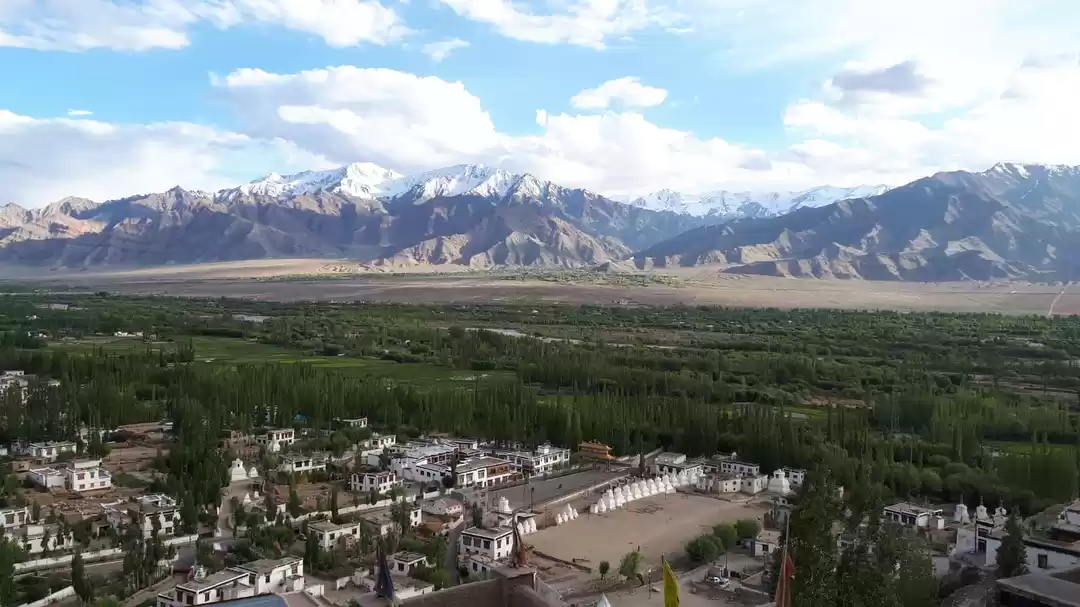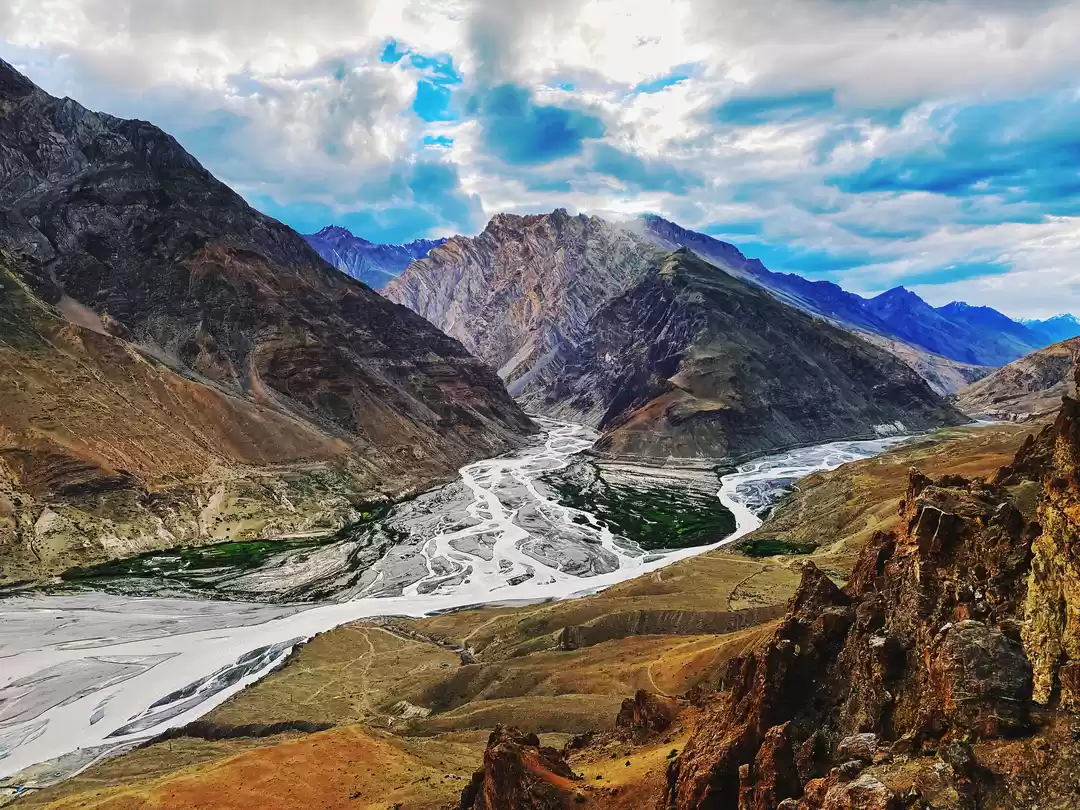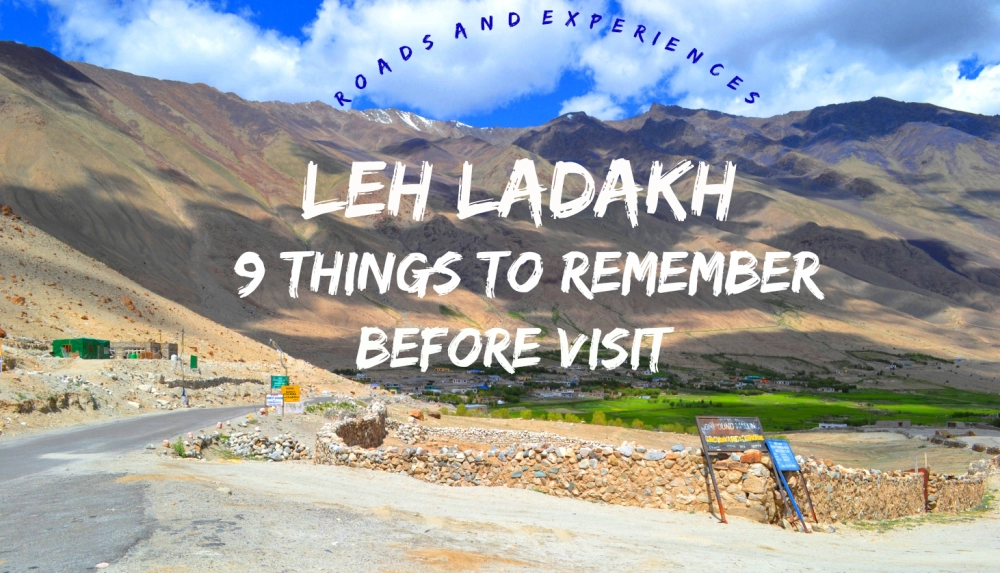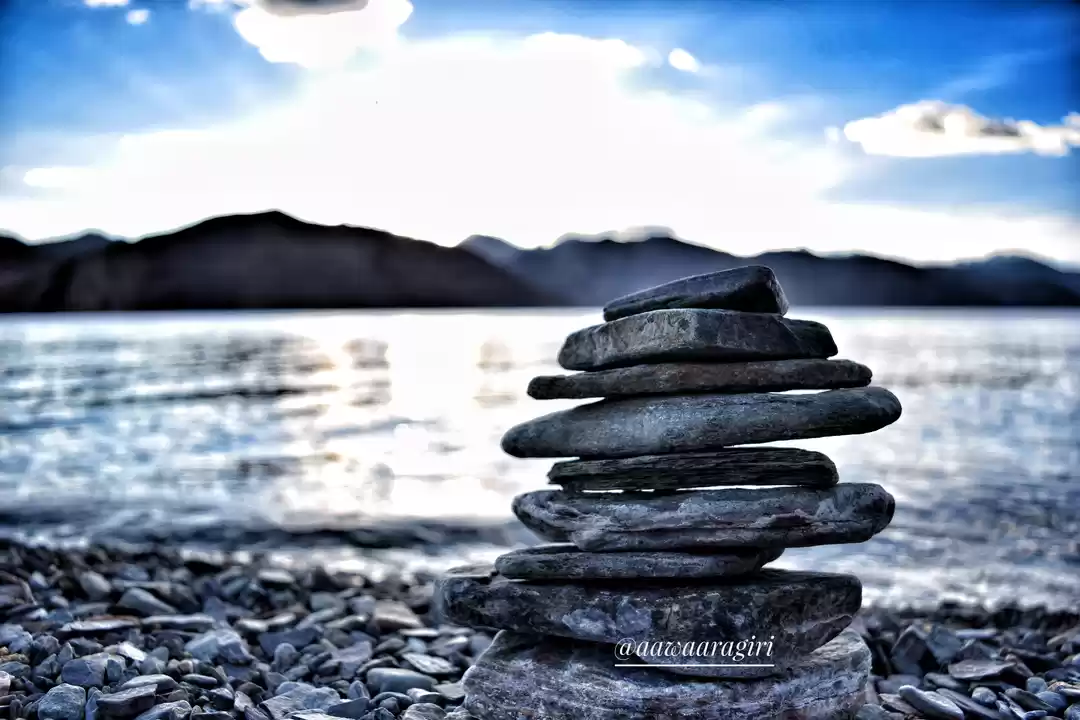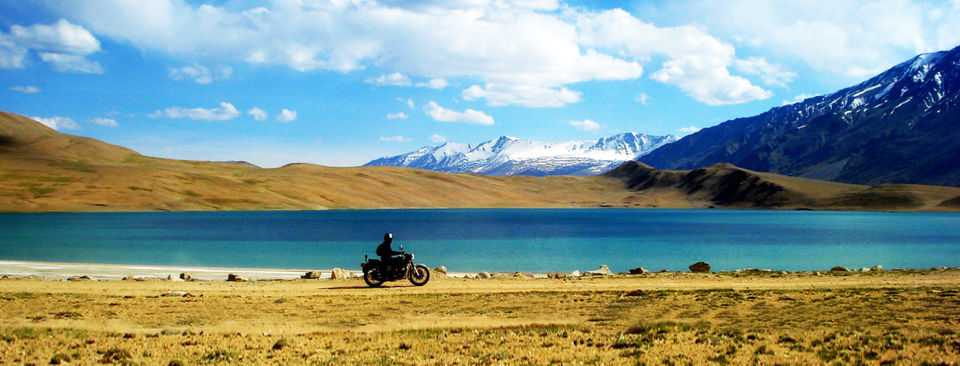
A trip to Ladakh is often categorized as an adventure because of the challenges it presents. Apart from the wonderful vistas that you get to see; there is also the excitement of driving through inhospitable terrains and dangerous roads. There are several things that you must prepare yourself for before planning a trip here; of which one of the most important topics is of acute mountain sickness Ladakh.
Acute Mountain Sickness occurs due to scarcity of oxygen at high altitude, and inability of our bodies to adjust to low oxygen content in air. In order to accommodate for low oxygen per breath, our body increases the breathing rate and this is the reason why we start to huff and puff so easily in mountains. The process of a human body getting accustomed to low oxygen and adapting to the new environment is called acclimatization.
While majority of travelers to Ladakh experience some or all of the symptoms of moderate AMS (headaches, nausea, vomiting, fatigue, loss of appetite and shortness of breath while walking), few get affected by severe AMS (shortness of breath at rest, inability to walk, decreased mental status and fluid buildup in lungs). Severe AMS can in some cases, lead to permanent brain damage or even death.
Acute Mountain Sickness Ladakh
Depending on the symptoms, Altitude sickness can be of three types.
Acute Mountain Sickness (AMS): AMS is the mildest, most common type of altitude sickness. caused by reduced air pressure and lower oxygen levels. Symptoms include difficulty in sleeping, dizziness, fatigue, headache, loss of appetite, nausea or vomiting, rapid heart rate, and shortness of breath.
High-Altitude Pulmonary Edema (HAPE): HAPE is a more serious condition of altitude sickness, symptoms include shortness of breath (even while resting), persistent coughing, exercise intolerance, coughing up pink, frothy spit (indication of fluid in the lungs).
High-Altitude Cerebral Edema (HACE): HACE, another and even more serious condition of altitude sickness, causes difficulty when walking, severe lethargy and a loss of focus. HACE and HAPE are rare and if not treated on time can be even fatal.
Diamox: Current recommendations are 125 – 250 mgs twice daily, starting a day before ascent and continuing for a couple of days at the height or even for the entire duration of stay.
Diamox has various side effects and you should consult with your family doctor, before taking Diamox, especially if you are on any medication. Also since Diamox is a sulfur drug, it cannot be taken by those who are allergic to sulfur drugs.
Dexamethasone: 2-4 mg of Dexamethasone every 6 hours is also effective in preventing and treating AMS. The mechanisms of action of dexamethasone in relieving AMS symptoms are unknown. Its relative effectiveness compared to Diamox has not been established, but it likely is equivalent to Diamox. Dexamethasone should only be taken in consultation with your family doctor/physician.
Disprin/Aspirin: Those who do not wish to take Diamox, blood thinners like Disprin, Aspirin etc. can not only help reduce some of the symptoms of AMS eg. headaches, but also help your blood carry more oxygen.
Oxygen Cylinder: You can also carry portable oxygen cylinders, which are available at chemist shops and should provide you temporary relief, in case you or those traveling with you start to feel uneasy.
How to Handle AMS in Ladakh
Slow gain in altitude: Time is the key to altitude sickness, both before and after you start feeling the symptoms. As a rule of the thumb, stop for a day at every 2,000 feet (600 meters) of climb above 8,000 feet (2,400 meters).
Avoid Smoking & Alcohol consumption: At several of the high altitude passes, you will find boards put up by Indian Army advising people not to smoke at such heights. Also stay away from any sleeping pills or anti-depressant medicines.
Avoid turning the heater on: If traveling in a Car, you will be tempted to turn on the car heater in the cold atmosphere of Ladakh. Avoid doing so or even if you did turn on the heater, do not keep it at full blower or full heat. In the closed atmosphere of a Car, using a heater at its full capacity may trigger the symptoms of AMS.
Sleeping Habits: While you need to ensure that your body is getting proper sleep, there are several places that you need to avoid sleeping at. Ensure that you are sleeping with your head on a pillow and not without it. Avoid sleeping during day at all. If you are feeling symptoms of AMS, try sleeping in an upright position, with your back against the wall.
Eating & Drinking Habits: Keep yourself hydrated. Drink plenty of water and ensure that your diet has lot of carbohydrates in it. At the same time, you need to make sure that you are not over hydrating yourself. Try having small meals rather than heavy ones; inclusive of food that is easily digestible.
Do not exert yourself: Keep your body relaxed, try to walk slowly and do not exert yourself with any unnecessary activities that will leave you panting.
Home Remedies for AMS in Leh Ladakh
There are some natural home remedies known to help with mountain sickness. These are some general daily use things and I will recommend that you pack these a little as well.
Lemon Juice: This juice is known to reduce headaches, coughs, vomiting and fever associated with altitude sickness.
Ginger : Chewing on some raw ginger can also combat nausea, dizziness, and vomiting at high altitudes.
Garlic: All you need to do is to peel off 2-3 garlic cloves and start chewing on them.
Clove: Clove is another natural home remedy that helps the body to be more efficient while using oxygen.
Lavender Oil: Apply 2 to 4 drops of lavender oil on your head for a headache or inhale the lavender oil to reduce nausea and dizziness.
Camphor: You can put camphor in handkerchief and inhale it at regular time interval.
Best route to avoid AMS
Srinagar – Leh Highway is lower in altitude than Manali – Leh Highway, with the highest point being 13,479ft (4,108mtr), Fotu La pass. In comparison, Manali – Leh Highway’s highest point is 17,585ft (5,360mtr), Tanglang La pass. And for the 200km long stretch between Zingzing Bar and Rumtse Village, altitude never dips below 13,780ft (4,200mtr).
Hence it is recommended to take the Srinagar – Leh Highway, if you have the time and wish to avoid getting hit by severe AMS.
You can also take the Shimla – Kaza (Spiti Valley) – Keylong route to Ladakh, which too will help you gain altitude gradually. However, please do not rush through it, since it will not only lessen your chances of gradually acclimatizing to high altitude, but you will also miss out on the wonderful sights en route.
You can take Leh – Manali Highway while returning from Leh.
Guide if you want to take the Manali – Leh Highway while going to Leh
If you just have to do Manali route first or if that is the only route you are planning to cover, then it is best to avoid spending the night at Bharatpur, Sarchu or Pang. Instead you should stay at Keylong, Jispa or Darcha and then start in the wee hours of the morning for Leh. If you have to spend a night between Baralacha La and Tanglang La, then Sarchu is safer bet than Bharatpur and Pang.
Whatever you do, do not attempt to cover Tso Moriri en route to Leh. Since it is even higher in altitude than Pang and will drastically increase your chances of getting hit by severe AMS as well as increase the time you spend at extremely high altitude.
Guide if you are flying to Leh
If you are planning to take a flight to Leh, then make sure to spend the first couple of nights in Leh or at places like Alchi or Uleytokpo, which are comparatively lower in altitude than rest of Ladakh.
Detailed Travel Guide to Ladakh
Once you arrive in Leh (either by land routes or by flight), you should still be cautious about your sleeping altitude and only gain it gradually by doing Nubra Valley first, followed by Pangong Tso and then Tso Moriri, Hanle etc.. This is due to the fact that even though you have to travel on the highest motorable road, Khardung La, to reach Nubra Valley, it is lower in altitude than Pangong Tso and Tso Moriri.
In fact irrespective of your mode of transport and route, you should aim to spend at least first couple of nights in Leh, in order to acclimatize and unwind, before proceeding to any of the above destinations.
If despite taking all the precautions, you still feel effects of AMS at Pangong Tso or Tso Moriri, then instead of spending the night there, you can return to Tangste (in case of Pangong) or Chumathang (in case of Tso Moriri) to sleep at a lower altitude and minimize the effect and danger of AMS. Normally descent of just 300-900 meters (1,000-3,000ft) is enough to make you feel better.
I hope the information above regarding Acute mountain sickness Ladakh was helpful. It is collected from various sources.
Frequent searches leading to this page:-
camphor for high altitude, garlic for altitude sickness, oxygen level in leh




















